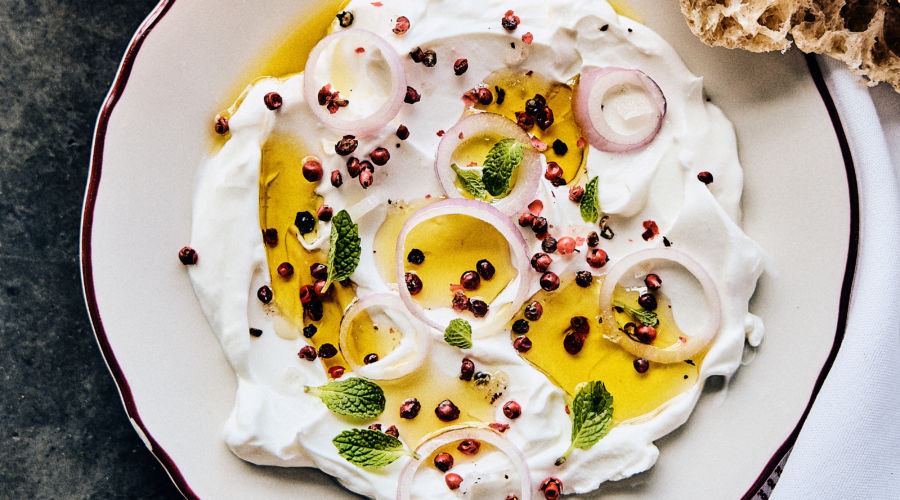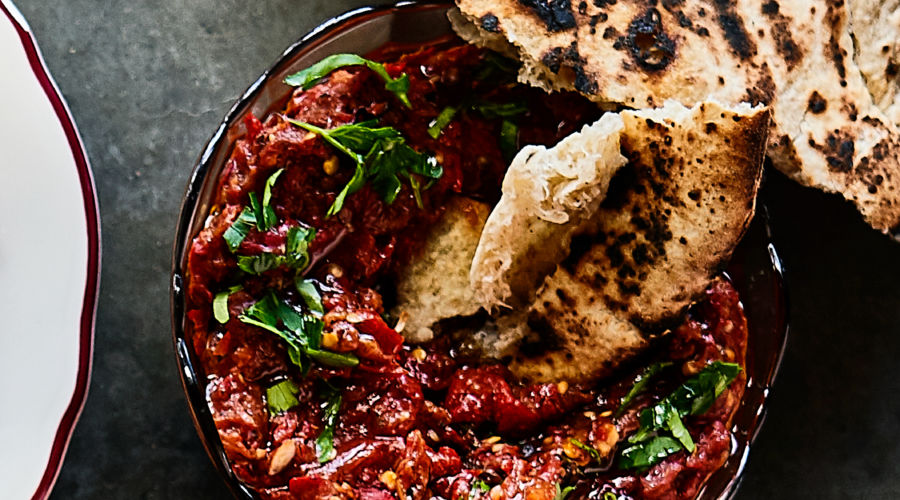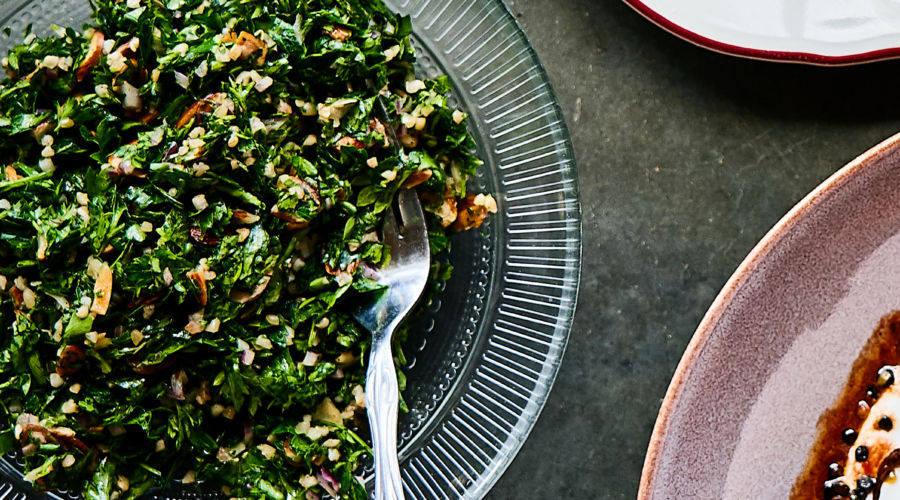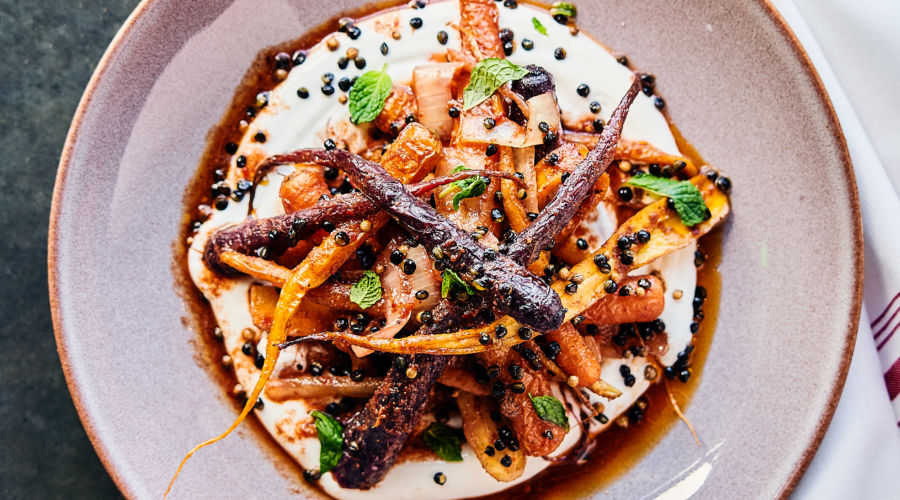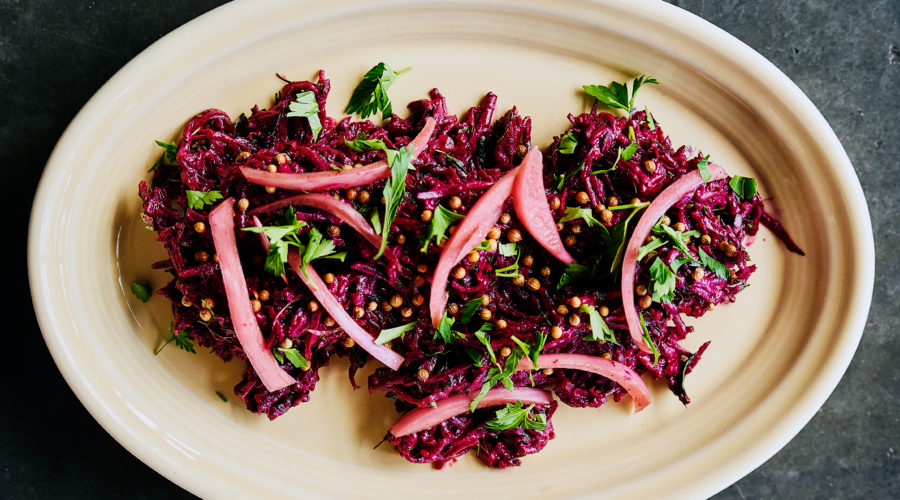Thomas J. Story
Meet Chef Alon Shaya
At age 4, Alon Shaya and his family moved from Israel to Philadelphia, where he stood out for both his name (kids called him Alone) and for the borekas packed in his lunch box. During those tough childhood years, the cooking of his grandmother, a Bulgarian woman who moved to Israel in 1948, brought him comfort. “Arriving home to the aroma of charred eggplant was always a clue that my grandmother was visiting,” says Shaya. At Safta, named after the Hebrew word for grandmother, Shaya proudly celebrates his heritage.
Thomas J. Story
Labneh
For this recipe for Labneh (a fresh cheese), if you don’t have cheesecloth, a very fine mesh strainer will also do the trick. You just lose a little more liquid. Save the whey after it separates from the labneh. It makes a great yogurt-y marinade for chicken.
Recipe: Labneh
Thomas J. Story
Lutenitsa
Home cooks can save time by buying roasted peeled peppers in a jar. Shaya suggests Spanish piquillo peppers, which are a little bit more intense in flavor.
Recipe: Lutenitsa
Thomas J. Story
Tabbouleh with Preserved Lemon and Almonds
There are two secrets to Shaya’s tabbouleh: Baharat, a Lebanese spice blend that can be substituted with pumpkin pie spice in a pinch, and really fresh parsley. “You want to chop and toss it right before you eat,” says Shaya. “I often see it sit too long and then it gets soggy.”
Thomas J. Story
Moroccan Carrot Salad
Shaya buys bunches of young carrots. “The skins are more tender,” he says. “I roast them skin-on for the added nutrients.” Rather than throw out the carrot tops, he blanches them quickly in salted water to pull out the bitterness and turns them into a pesto.
Recipe: Moroccan Carrot Salad
Thomas J. Story
Roasted Beets with Tahini
“Even if you don’t like beets, you’ll love this salad,” promises Shaya. “The nutty flavor from the sesame in the tahini pairs well with the earthiness of the beets.” Shaya suggests adding Aleppo peppers for a spicy kick or substituting orange juice for lemon to add more sweetness.
Recipe: Roasted Beets with Tahini
Thomas J. Story
The Israeli Pantry
These ingredients are readily available at Middle Eastern markets as well as from online retailers such as Smith & Truslow and Oaktown Spice Shop.
PRESERVED LEMON (pictured above) “We use them on our lamb and baba ghanoush flatbread, and as a rub on our lamb bacon. Itʼs also great in a martini.” —Chef Sayat Ozyilmaz, Noosh, San Francisco
NIGELLA SEED “This little-known seed has a distinct, smoky flavor. Put it on the rim of a mezcal drink to bring out more smokiness.” —Chef Haitham El Khatib, Aleph Eatery, Vancouver, B.C.
BAHARAT “A beautiful blend of a dozen flavors, this spice is unparalleled for grilled chicken thigh or mixed into deviled egg filling.” — Chef Daniel Asher, AshʼKara, Denver
ZHOUG “Adding a dab of this spicy, cilantro-based Yemeni sauce to hummus is an easy way to kick up the flavor.” —Chef Ori Menashe, Bavel, Los Angeles
ZAATAR “The blend changes but key spices are thyme, sumac, and sesame. Press your chicken in it and pan fry it to make zaatar-fried chicken.” —Chef Reem Assil, Dyafa, Oakland
HARISSA “I compare harissa to hot sauce. Drizzle it on scrambled eggs. Brush it on ribs. I even make a salad dressing out of it by adding olive oil and lemon.” —Chef Alon Shaya, Safta, Denver
URFA BIBER “Toss root vegetables with olive oil, salt, and Urfa biber. Roast until caramelized. Theyʼll taste like they were kissed by smoke.” —Chef Logan Cox, Restaurant Homer, Seattle
SUMAC “The acidity from the berry will cut the richness of really rich meats. Iʼll also add it to vinaigrettes to add another layer of citrus.” —Chef Ori Menashe, Bavel, Los Angeles

